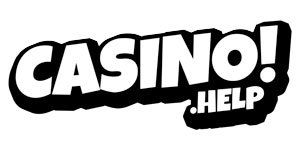‘Amiga 500 Mini’ Review
The Amiga 500 Mini has been on the market for about a year. A price drop, that saw me able to pick one up for 75 euros finally sucked me in. Growing up, I was an Amiga kid, and a little A500-shaped plastic box is able to trigger some serious nostalgia for me. To me, the death of Commodore and Amiga was a corporate tragedy, up there with the cancelling of the TV series “Firefly”.

The A500 Mini is, for the money, a well-made piece of kit. Sadly the tiny buttons are just part of the case and cannot be pressed, but that is fine. It is scaled down (thank goodness, the A500 was a monster) and my early concerns about the quality of the gamepad were unfounded (it is not the best on the market, but for the money it is fine). The controller is also pleasingly shaped like the Amiga CD32 controller (more on the CD32 later) and a joystick is available to purchase separately (albeit I have not tested that).
The user interface here is simple, but modern. Scroll left and right, hover over the beautiful artwork, for each game and read the interesting little bios before selecting the desired game. Games can be saved. The machine comes pre-loaded with 25 emulated games (but don’t think “emulated” is a dirty word. This emulation has been knocking around since the 90s for Amiga games, and it is excellent). In terms of the selection of games, it is uneven. I am no expert in retro game licencing, and quite how murky it all is, but some of the games are top shelf bangers, and some cause me to scratch my head at their inclusion.
The Chaos Engine, Worms, Alien Breed, Simon the Sorcerer and Speedball 2 are however some of the best, and most iconic games that were released during the long life of the Amiga. Zool was always very iconic, and I remember it fondly, but it has aged terribly and compares very poorly with Sonic the Hedgehog, a contemporary it clearly went after, also being run by the Motorola 68000. Zool is an exercise in frustration. Re-spawning baddies, frustratingly designed levels, and controls not doing what you want them to. However, getting to reappraise games, so many years on is surely part of the appeal.
The most tempting feature of the A500 Mini for me, is the ability to stick a USB stick full of ROMs in the back of the machine, and play any Amiga game. I am not sure about the legality of any of this, but the company behind it provides detailed instructions on how to download and side-load games onto this machine (so I am assuming this is “OK”, legally speaking). I must admit, I have ordered a USB stick, so haven’t gotten around to testing this feature yet, but there are a huge number of Bitmap Brothers, Sensible Software and Psygnosis games I can’t wait to play (not to mention Monkey Island 1 and 2. From what I understand, these games can also be saved in-game).
The Amiga spent its life squatting on the Venn diagram, between the game systems that dominated the living room (your Megadrives etc) and rival computers of the time (before “IBM compatible” became a thing, Doom became a thing and “PC”s became ubiquitous). When booting up my Amiga, I would always had to first insert the “Bootstrap” disc, so the machine could load the OS to memory (later Amigas actually had a hard drive, but that was in the last days).
The Megadrive started life with a 3-button controller (later, when Street Fighter 2 happened, it was able to pivot and make a 6-button controller, with very little hassle to the consumer). I remember I had Street Fighter 2 on the Amiga. I spent a good deal of time, swapping multiple disks between fights to allow it to load, and God bless the developers who worked out some kind of system for Street Fighter 2 to function, with a single-button joystick. It was a complete mess, and no amount of joystick waggling could ever result in playing with any kind of precision or tactics. I also remember the frame rate was not brilliant.
Games were slowly, but surely moving away from what the Amiga could offer, and even in the Amiga’s heyday, software piracy was so rife, that sales figures for even the biggest titles were shockingly low (100k sales for an Amiga game were incredible).
Looking back, it amazes me how young most of the developers, that made these classic games were. They were in their teens and early 20s, doing it for the love. There was no such thing as mega-publishers or crunch. This was an innocent time, before loot boxes and shareholders infected the industry.
Even during its time “on top” Amiga never managed to build up the resources to compete financially with their competitors. Terrible management meant the Amiga, and their parent company Commodore were never far from going to the wall. The Amiga CD32 was their last roll of the dice, at the same time the 3DO company and Jaguar were also about to roll snake eyes on their last, desperate games. The Jaguar had Rayman, Tempest 2000, Doom and AvP. The 3D0 had Wing Commander 3, Road Rash, and a brilliant version of Street Fighter 2. What did the CD32 have?
How Amiga thought that the future of console gaming would be an Amiga 1200, that plays CDs and you can plug into your TV is beyond me. Most of the releases were games that would run on the ageing Amiga 500 (but perhaps with slightly nicer backgrounds, which was not really the leap in experience that gamers were looking for). I remember we were all obsessed with Doom at the time (even though, if I am completely honest, I didn’t enjoy Doom then, and I don’t enjoy it now). Doom was the future, and the CD32 had no “killer app” or anything else that could show gamers what Amiga’s vision for the future was, other than “a computer that’s been on the market for a few years, in a different box, with a 2 speed CD drive, and if you like, you can plug a keyboard into it”. A lawsuit meant the CD32 was not allowed to be released in the US (by far the biggest potential global market at the time). If this is your final gamble, you haven’t weighted the scales in your favour.
The various Amiga machines tried to fight against the dying of the light. Any number of Doom clones were released (one pleasingly called “Gloom”) but the harder they fought, the more it seemed inevitable that the Amiga was doomed. The harder the Amiga tried to prove it was relevant, the more obvious it was that it was not.
If you are in the market for a cute little box, to plug into your TV, to play some Amiga games, the A500 Mini is a great little product, however doing so has made me think most of all about why the Amiga was such an evolutionary dead end, in terms of games and tech in general. In its day, it was a wonderful machine. A great sound chip, brilliant colours, and some parallax scrolling… but the summer was short. The best Amiga games are however absolutely worth your time and are fun today, and the A500 Mini is a nice way to experience them. Remember if you have a computer and a gamepad, you will be able to experience these games for free via an emulator. The Evercade VS does a similar thing, for a similar price for the machine.
The A500 Mini is a nice piece of kit, one that I struggle to recommend to anyone who isn’t already invested emotionally in the Amiga. I honestly think most people are going to have a better time with a Megadrive or a SNES mini. That is not to say the A500 Mini is bad, it is perfectly good. It is just the Amiga existed as a cut flower. It is good to look at, but it could never survive. In going through this experience, I can finally let go of the Amiga.






































